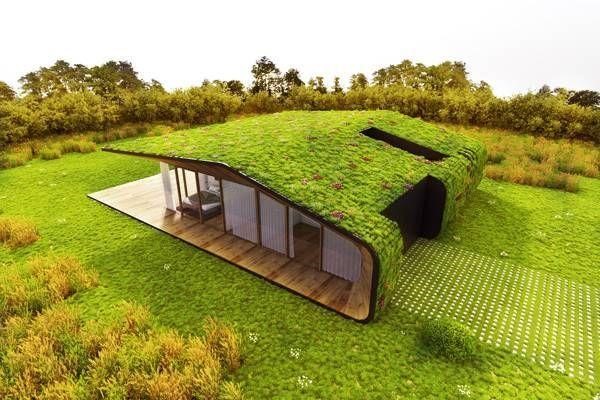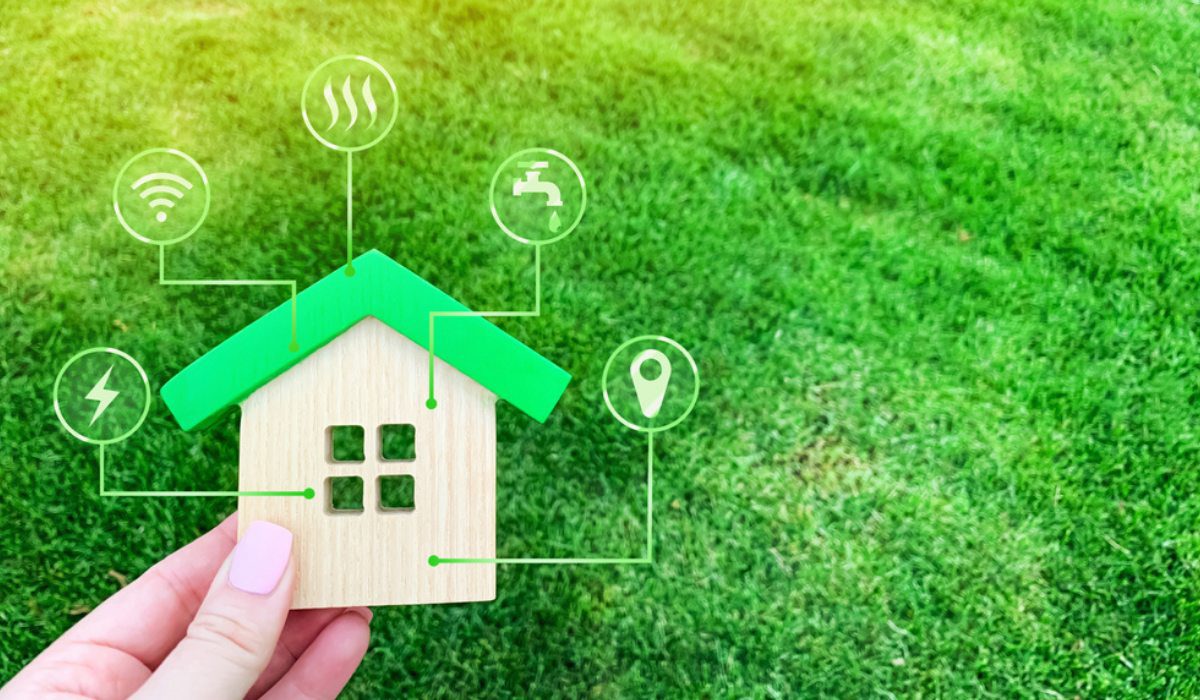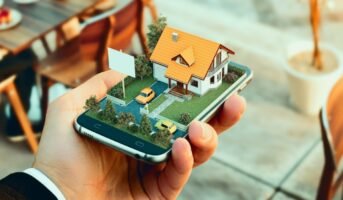An eco-friendly home is an environmentally friendly home that minimises its impact on the environment. This can be achieved by using renewable energy sources, minimising the amount of waste produced, and recycling as much as possible. The environment is a priority for many people, and they are looking for ways to improve their homes and lives while also reducing their carbon footprint. Eco-friendly homes are becoming more popular as the benefits of living in one become apparent. Eco-friendly homes can be a great choice for those who want to reduce their impact on the environment
Eco-Friendly Homes: What Are They?

Source: Pinterest
Eco-friendly homes are built with the environment in mind. They are designed to be environmentally friendly, and they use as many renewable resources as possible. The goal of eco-friendly homes is to reduce the amount of carbon dioxide they produce, thereby reducing greenhouse gas emissions. An “Eco-friendly” home uses energy-efficient appliances and technologies, such as LED lights and energy-efficient heating and cooling systems.
Eco-friendly homes are designed to use less energy and resources than traditional homes do. They also use recycled materials whenever possible and minimise waste. Eco-friendly homes can help save the environment by reducing greenhouse gas emissions (GHGs) and improving air quality.
Eco-Friendly House Features

Source: Pinterest
By using renewable energy sources, minimising waste production, and recycling as much as possible, an eco-friendly home minimises its impact on the environment. An eco-friendly house has been designed with all kinds of considerations in mind, from the way it looks to how it functions. Here are some of the most common features:
- Low heat loss through windows and doors.
- Energy-efficient appliances and lighting.
- Low water consumption – Either through rainwater harvesting or by using a greywater system.
- Minimal waste production – e.g., composting food waste instead of throwing it away in bins; reusing materials such as old newspapers instead of throwing them away.
- Low carbon footprint – e.g., using natural insulation such as straw bales or wool; heating with renewable sources such as wood pellets or biofuels.
Different Types of Eco-Friendly Homes
-
Bioclimatic Houses
Bioclimatic homes are a concept for energy-efficient buildings that take into consideration their environment. They use natural resources from the place in which it is built. The location and geographical position are important to build a bioclimatic home so that it will work with the characteristics of the place.

Source: Pinterest
-
Passive Houses
Passive homes rely on solar power, yet there is much more to them than that. Passive houses are constructed in a way that makes them energy efficient, and the goal is for the residents to have them powered efficiently enough in such a way that they no longer need to take from an outside source such as grid or utility companies. Passive Houses are certified against standards set forth by The Passive House Institute.

Source: Pinterest
-
Wooden Houses
Homes made from wooden materials are eco-friendlier and more economical than homes constructed with traditional bricks, cement and mortar. Wood is a natural component of the environment, so its use can only have positive environmental impacts and benefits. Structures like these allow us to recycle and reuse natural materials that would otherwise remain unused and help keep them out of landfill where they will never again decompose naturally.

Source: Pinterest
-
Tiny Houses
Tiny houses have grown in popularity, and this could very well be due to their widespread promotion through the media. Tiny houses seem to emphasise simplicity, which is difficult yet rewarding. You can find that the small things in life that require less energy are more gratifying than the big ones – because we usually tend to overcomplicate them instead of simplifying them! By living in a tiny house, one can save money, save space and waste less energy too – what’s not to love about that?

Source: Pinterest
How are Eco-Friendly Houses Constructed?
Green construction materials can be found in many different types of homes. These include wood, stone, bamboo and clay bricks. The goal is to reduce the number of harmful chemicals used during the building process while also preserving the environment by using natural resources instead of synthetic ones like glass or plastic.
- Wood– Wood is one of the most widely used materials for construction, as it is easy to work with and has a long lifespan. Also, it is easy to maintain and can be used in many different ways.
- Concrete– Concrete is a cheap material that can be used in many different ways. It is also durable and weatherproof, which makes it great for buildings that need to withstand harsh elements like snow and rain.
- Plastic– Plastic is another inexpensive material that can be used in many different ways, such as in building walls or floors. It also lasts longer than other materials because it doesn’t degrade over time like wood does when exposed to sunlight or water damage/rotting after years of being left out in the elements untreated.”
What can you do to make your existing home Eco-Friendly?

Source: Pinterest
Converting your home into an eco-friendly one can be easy and affordable. All you need is a little bit of planning, as well as some basic knowledge about the technology involved in converting your existing home into an eco-friendly one. With the growing popularity of eco-friendly homes, more and more people are opting for eco-friendly living spaces. But how do you convert your existing home into an eco-friendly one?
The following tips will help you convert your home into a green one:
-
Change your light bulbs to LED

Source: Pinterest
This is one of the simplest ways to make your home more eco-friendly. You can change your incandescent bulbs to LED bulbs. LED bulbs use less energy and produce less heat, which means they are more eco-friendly. They also have a longer lifespan than other bulbs.
-
Install a Programmable Thermostat
A programmable thermostat can not only save you money on your energy bills but also make your home more eco-friendly. Programmable thermostats get your home to the desired temperature before you get home from work. They also turn the heat down or air conditioning off when you’re not at home. By doing this, you’re not keeping your home at a constant temperature, so you’re not using as much energy as you would if you were to keep it at a certain temperature all the time.

Source – Pinterest
-
Go solar – use renewable energy
Solar energy is one of the most eco-friendly forms of renewable energy. It doesn’t contaminate the air or lead to global warming. If you can afford it, installing solar panels on your roof is a great way to make your home more eco-friendly. You’ll be reducing the amount of CO2 released into the atmosphere by not using the grid. The amount of energy they produce will depend on where you live and the strength of the sun where you are.

Source: Pinterest
-
Get an eco-roof
An eco-roof is a roof that is made from recycled materials that have been reused in another way. You can get an eco-roof made from old tires or even wood shingles that have been recycled from trees that have fallen. You can also get an eco-roof made from a material called synthetic or artificial turf. This is made from recycled waste and is a common material for building sports fields.

Source: Pinterest
What are the advantages and disadvantages of Eco-Friendly houses?
For those who want to reduce their impact on the environment, eco-friendly homes are a great option, but you should choose one that fits your lifestyle and budget. There are pros and cons to each type of green home design, so you should consider all your options before deciding which one is right for you.
There are a lot of benefits to converting your existing home into an eco-friendly one.
- You’ll save money on utilities: You’ll be able to save money on your utility bills by reducing the amount of energy you use, as well as switching to more efficient light bulbs and appliances.
- You’ll be more environmentally conscious: By converting your home into an eco-friendly one, you’ll be doing your part to keep our planet clean and healthy for generations to come. Plus, you can feel good about knowing that you’re helping protect the environment.
- You’ll make your house more comfortable: If you’re planning on staying in the same house for a long period, an eco-friendly remodel will help make sure that it remains comfortable and functional for years to come.
There are a few cons to consider when you’re looking to go green, but the benefits outweigh them. Here are a few things to keep in mind:
- It can be more expensive to build an eco-friendly home than a conventional one. If you’re building a new house, it’s worth it to look into building with environmentally friendly materials and methods.
- Your home may not be as energy efficient as you’d like it to be. You might not need all of the heavy insulation if your new home is well insulated, but if you want even more insulation, then you’ll want to make sure that your windows are double pane with low-E glass, or else they won’t be as efficient at keeping heat out.
- You may have trouble finding enough contractors who know how to work with green materials for your project. Some contractors will only work with conventional construction methods because they’re familiar with them and not as likely to have any issues with them. Others simply don’t know how to construct homes using green materials effectively and efficiently.
Characteristics of an eco-friendly house

Source: Pinterest
Less energy consumption
Energy efficiency is one of the most important environmental factors in any building project. From small measures like sealing air ducts to prevent air leakages to larger initiatives such as using renewable resources for heating and cooling systems, every aspect of the building is sensitive to environmental changes. The top energy-saving techniques used in eco-friendly houses include the installation of solar panels, energy-efficient lights and timer-adjusted street lights, which also generate energy(s) from renewable resources, such as tidal and hydroelectric power.
Low waste management
Reducing landfill waste and lowering a building’s carbon footprint are the main goals of an eco-friendly home. The wastewater that is typically directed to sewage plants is also treated on-site to reduce the building’s carbon footprint. These houses offer efficient waste management systems with the potential for on-site composting and separation of wet and dry waste, which can further reduce negative impacts on the environment.
Promotes healthy lifestyle
Eco-friendly houses are built to withstand pollution and contamination because they feature beautiful landscaping that is sure to uplift your mood and make you feel free. They also offer you a healthy lifestyle opportunity by providing amenities such as natural running trails, vibrant gardens, and verdant parks where you can rejuvenate unnoticed by the hectic city’s streets. These improvements will have a huge positive impact on your mental, physical, and spiritual energy, which will help you focus better.
Maximum water conservation
Water is one of our most valuable resources. The actions taken in line with sustainable development and eco-friendly houses focus on water efficiency from the moment of construction all the way through completion. For example, low-flow water fixtures are installed that utilise half as much water as was used before for the same intended purpose. This being said, not only rainwater is harnessed, but alternative sources of water for irrigation and sanitation purposes are also taken into account when constructing eco-friendly houses.
Housing News Desk is the news desk of leading online real estate portal, Housing.com. Housing News Desk focuses on a variety of topics such as real estate laws, taxes, current news, property trends, home loans, rentals, décor, green homes, home improvement, etc. The main objective of the news desk, is to cover the real estate sector from the perspective of providing information that is useful to the end-user.
Facebook: https://www.facebook.com/housing.com/
Twitter: https://twitter.com/Housing
Email: [email protected]












